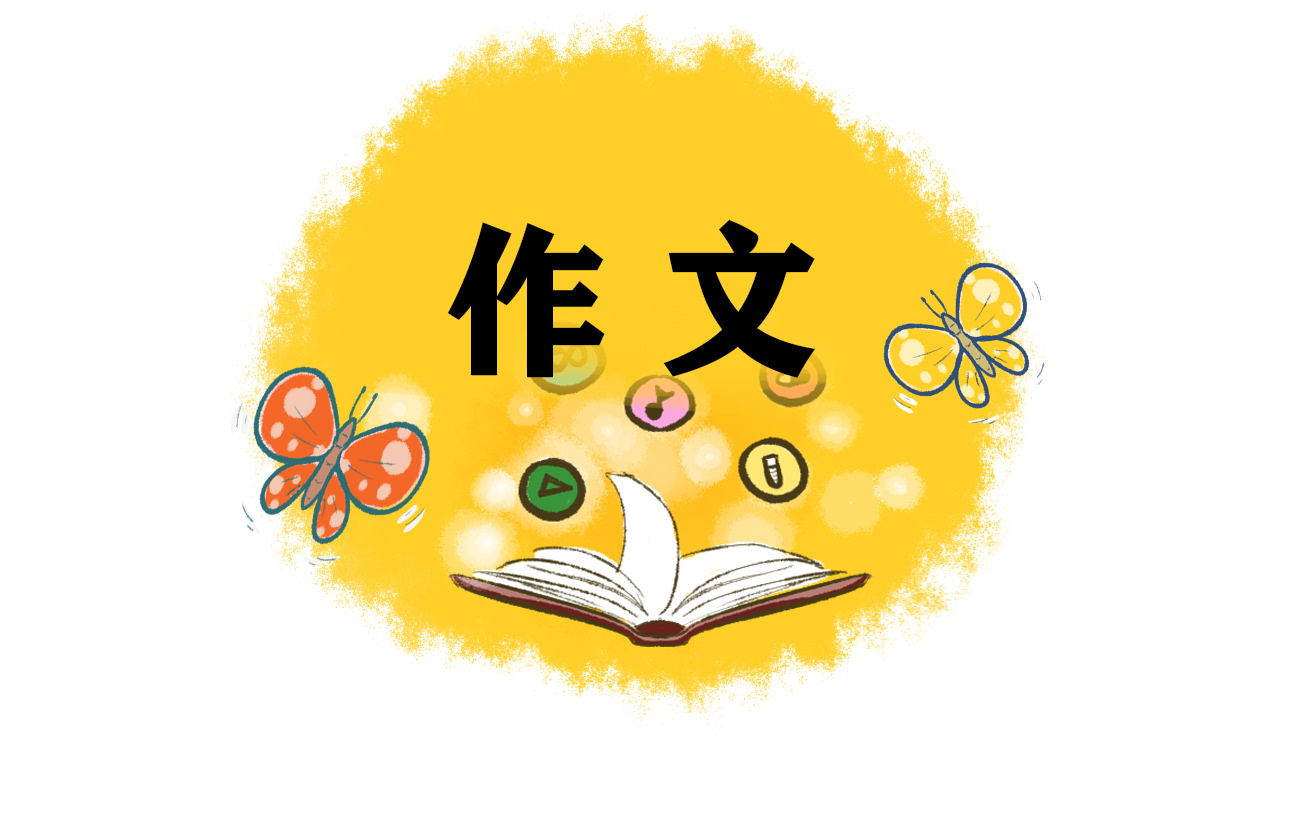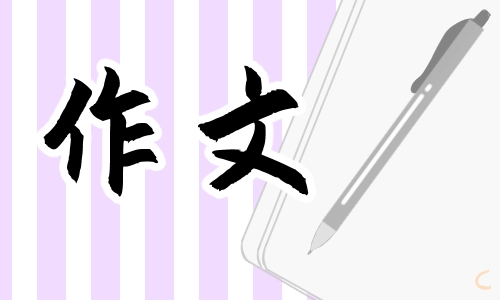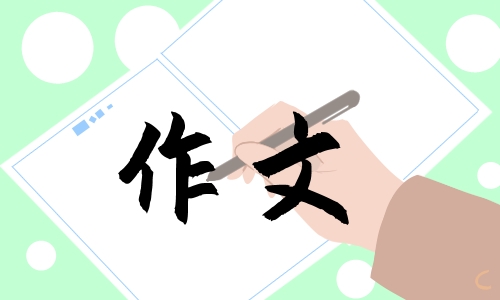愿你插上一对有力的翅膀。坚韧地飞吧,不要为风雨所折服;诚挚地飞吧,不要为香甜的蜜汁所陶醉。朝着明确的目标,飞向美好的未来。小编呕心沥血收集整理的五年级下册英语知识点总结,下面小编就带大家分享展示一下!!!
五年级下册英语知识点总结1
eat breakfast吃早餐 have···class上···课 play sports 进行体育运动
exercise 活动,运动 do morning exercises早锻炼 eat dinner吃晚饭
clean my room 打扫我的房间 go for a walk 散步 go shopping 去购物
take学习,上(课) dancing舞蹈 take a dancing class 上舞蹈课
a.m上午 p.m.下午 usually 通常地
二、 其他日常活动。
get up起床 eat lunch吃午饭 go to bed 上床睡觉
wash my face洗脸 wash my clothes 洗我的衣服 watch TV看电视
play ping-pong打乒乓球 play the pipa弹琵琶 go swimming 去游泳
go running去跑步 do homework 做作业 do kungfu练武术
play football踢足球 play basketball打篮球
三、频度副词。
always总是,一直(100%) usually通常(80%) often经常(60%) sometimes(30%)有时
四、疑问词。 when什么时候 why 为什么
五、重点句型。
1、询问别人什么时候做某事的句型及回答。
句型结构:问:When do you+动词短语原形+其他?(你/你们什么时候做某事?)
答:I/we(+频度副词)+动词短语原形+at+具体时间(我/我们通常在几点做某事。)
例:问:When doyou go to bed?(你什么时候上床睡觉?)
答:I go tobed at 9:00p.m (我晚上9点上床睡觉。)
注意:当主语是第三人称单数(he,she,it,单个人名或单数名词)时,助动词do要变成does,
句型结构是:when does+主语(第三人称单数)+动词短语原形+其他?
2、询问别人周末做什么的句型及回答。
句型结构:问:What do you do on the weekend?(你周末做什么?)
答:I(+频度副词)+动词(短语)+其他。
例:问:What doyou do on the weekend?(你周末做什么?)
答:I usually read books. (我通常看书。)
注意:当主语是第三人称单数(he,she,it,单个人名或单数名词)时,助动词do要变成does,
句型结构是:what does+主语(第三人称单数)+do+on the weekend?
五年级下册英语知识点总结2
第一单元知识点
一、主要单词:
do morning exercises 晨练,做早操 eat breakfast吃早饭
have English class上英语课 play sports进行体育活动
eat dinner吃晚饭 eat lunch吃午饭 climb mountains 爬山
go shopping购物,买东西 play the piano 弹钢琴
visit grandparents 看望(外)祖父母
go hiking去远足
二、主要句子: When do you eat dinner?你什么时候吃晚饭?
I eat dinner at 7:00 in the evening. 我晚上七点吃晚饭。
When do you get up? 你什么时候起床?
I usually get up at 12:00 at noon.我通常在中午12点起床。
What do you do on the weekend?你在周末干什么?
Usually I watch TV and go shopping. 我通常看电视和购物。
Sometimes I visit my grandparents.有时候我去看望我的外祖父母。
I often play football. 我经常踢足球。
Sometimes I go hiking.有时候我去远足。
三、 同义词
eat breakfast—have breakfast eat lunch—have lunch eat dinner—have dinner play sports—do sports
usually—often
复数形式:policeman—policemen policewoman—policewomen
现在分词:tell—telling
三单:say—says
同义句:What do you do ? ---What are you? 你是干什么的?
四、表示频度的副词:always 总是,一直 usually 通常,常常
often 经常 sometimes 有时候
五、以复数形式出现的词组:visit grandparents plant trees
六、介词后跟表示时间的词语时,表示在某年、某月、某个季节,某个时候(在上午,在下午,在晚上)用in;表示在某一天,在星期几用on,在具体的几点几分用at.
七、too 和either的用法区别:too和either都是“也”的意思,但too用于肯定句,either用于否定句。
第二单元知识点
一、主要单词:
season季节 spring春天 summer夏天 fall冬天
winter冬天 swim游泳 fly kites 放风筝 skate滑冰
make a snowman堆雪人 plant trees 种树
主要句子:Which season do you like best?你最喜欢哪个季节?
I like winter best.我最喜欢冬天。
Summer is good, but fall is my favourite season。
夏天是很好,但是冬天是我最喜爱的季节。
Why do you like summer? 你为什么喜欢夏天?
Because I can swim in the lake.因为我可以在湖里游泳。
Why do you like winter? 你为什么喜欢冬天?
Because I can sleep a long time. 因为我可以睡很长时间的觉。
三、同义词:autumn—fall
三单:say—says ask—asks come—comes
对应词:wake up—sleep go to bed—get up
同义句:What’s your favourite season?(你最喜爱的季节是什么?)----Which season do you like best?(你最哪个季节?)
四、play with 玩雪,play in the snow在雪中玩 . 如果在横线后面有the ,则选择in , 如果在横线后面没有the , 则选择 with.
五、like后面不能直接跟动词。如果需要跟动词或动词性词组时,则需在like后面加to. 如果不加to. 就要把后面的动词变成相应的动名词形式. 如:I like to swim ===I like swimming.
六、当表示某地某个季节的天气情况时,要把季节放在前面,地点放在后面。其结构为:What’s the weather like in 季节in 地点?
第三单元知识点
一、主要单词:January (Jan.) February (Feb.) March (Mar.) April(Apr.) May June July August(Aug.) September(Sept.) October( Oct.) November (Nov.) December ( Dec.)
二、主要句子
1. When is your birthday?你的生日是什么时候It’s in May. 在五月。
2. My birthday is in June. Uncle Bill’s birthday is in June, too.我的生日在六月。比尔叔叔的生日也在六月。
3. Is her birthday in June? 她的生日在六月吗?Yes. 是的。
4.What’s the date? 是几月几日?June 9th .六月九日。
5. What’s the date today? 今天是几月几日?
It’s April 10th. 四月十日。
三、主要知识点:1、关于月份:(1)五月May , 六月June, 七月July,没有简写形式。九月September 的简写形式是前四个字母加点Sept. 其他八个月的简写形式是前三个字母加点。(2)无论是完全形式还是简写形式,表示12个月的单词的第一个字母都要大写。
2、关于基数词变序数词。(1)一般情况下,直接在基数词后面加th. (one , two , three 除外)。one—first , two—second , three—third . (2) 以ve结尾的基数词,变ve为f, 再加th. 如:five—fifth , twelve—twelfth. (3)以t结尾的基数词,直接加h。如eight—eighth. (4) 以不发音的字母e结尾的,丢掉不发音的字母e,再加th. 如 nine—ninth. (5) 以y结尾的整十数,在变为序数词时,将y变为ie, 再加th. 如twenty—twentieth .(6)20以上的两位数,变为序数词时,十位数不变,只将个位上的数变为序数词。如:twenty-one----twenty-first ,
twenty-two—twenty-second , thirty-four—thirty-fourth .
(7)序数词的简写形式为表示该词的阿拉伯数字加上该单词的最后两个字母,最后两个字母要变成上标格式。如:first—1st , second—2nd , third—3rd , fourth—4th . twentieth—20th
3. 在回答When is your birthday?这个问题时,如果只说明生日在几月份,在月份前用in.如 My birthday is in July. 如果要具体说明生日是在几月几日,则要把in去掉,直接用is,或者在is后加on。如My birthday is June 9th. 或My birthday is on June 9th .
4.注意区分两个句子:What day is it today ?今天星期几? What’s the date today? 今天是几月几日?
5. 根据要求写单词:
make (现在分词)---making. send( 现在分词)---sending.
6.句子:How many birthdays are in October ?有几个人的生日在十月? There are 3.
7. My birthday is in February .
(变为一般疑问句)---Is your birthday in February?
8. Does she have a computer? 她有计算机吗?当第三人称单数和句子中出现了does时,其他动词必须使用原型。
9、读序数词时,前面一定要加the. 如 October 1st .读作October the first.
10、同义句:
Who has a birthday in October?===Whose birthday is in October?
第四单元知识点
一、主要单词:
draw pictures 画画 drawing pictures 正在画画
do the dishes 洗碗碟 doing the dishes正在洗碗碟
cook dinner 做饭 cooking dinner 正在做饭
read a book 读书 reading a book 正在读书
answer the phone 接电话 answering the phone 正在接电话
listen to music 听音乐 listening ti music 正在听音乐
wash clothes 洗衣服 washing clothes 正在洗衣服
clean the room 打扫房间 cleaning the room 正在打扫房间
write a letter 写信 writing a letter 正在写信
write an e-mail 写电子邮件writing an e-mail正在写电子邮件
二、主要句子:
1. This is Zhang Peng .(电话用语)我是张朋。
What are you doing?你正在干什么?
2.I’m doing the dishes.我正在洗碗碟。
I’m reading a book。我正在读书。
3.Grandpa is writing a letter。 爷爷正在写信。
Brother is doing homework. 弟弟正在做作业。
4.Mom is cooking dinner in the kitchen.妈妈正在厨房里做饭。
5.Dad is writing an e-mail in the study.
爸爸正在书房里写电子邮件。
三、知识点:
1、在电话中介绍自己时,可以用“It’s … ”或者‘This is ….’。但是不能用“I am …”或者“My name is …”
2.在电话中表另一个人接电话时,应该说:“Can I speak to …?”
3、告诉别人接电话时,说:There is a call for you.
4、在接电话时请别人稍候说:Hold on please.或者Please hold on.
5、动词变为现在分词(加ing)的规则:
(1) 一般情况下,在动词的后面直接加ing. 如:play—playing
clean—cleaning draw—drawing cook—cooking
(2) 以单个不发音的字母e结尾的动词,去掉不发音的字母e,再加ing .
如:write—writing come—coming take—taking make—making leave—leaving have—having
(3) 以重读闭音世结尾的动词,如果词尾只有一个辅音字母,则要先双写这个辅音字母,再加ing. 如: run—running swim—swimming put—putting sit—sitting set—setting
第五单元知识点
一、主要单词
fly 飞 flying 正在飞 walk 走 walking 正在走 jump跳 jumping正在跳 run跑 running 正在跑
swim 游泳 swimming 正在游 climb爬 climbing 正在爬 fight 打架 fighting 正在打架 swing荡秋千
swinging 正在荡秋千drink water喝水drinking water 正在喝水
二、主要句子:
1. What is it doing? 它正在干什么?
It’s eating bananas.它正在吃香蕉。
2. What is she doing? 她正在干什么?
She is jumping. 她正在跳。
3. What are they doing? 它们正在干什么?
They are swimming.它们不瞅正在游泳。
They are climbing trees.它们正在爬树。
三、主要知识点:
1、在英语中,当表示妈妈时,无论是人类妈妈还是动植物的妈妈,都可以用she . 而表示婴儿时,也都可以用it.
2、系动词be 的用法:我是am你是are, is跟着他她它。如果人称是复数,扑面一律都用are.
如:I am reading a book. He is cooking dinner.
We are doing an experiment. Are you eating lunch?
3、With 除了表示和…一起外,还可以表示“使用”,如:
That elephant is drinking water with its trunk.大象正在用它的象鼻喝水。
I am writing with my pen.我正在用我的钢笔写字。
4、当句子中出现了can时,动词一定要用原形。
如:Can tigers really swim?
I can wash the clothes.我会洗衣服。
I am washing clothes.我正在洗衣服。
5、can , usually , often , sometimes , always 这几个单词都是一般现在时的好朋友,当句子中出现了它们时,动词一般都要用原形。
now, am , is , are 这几个单词都是现在进行时的好朋友,当句子中出现了它们时,动词要用现在分词形式,也就是ing形式。
第六单元知识点
一、主要单词
pick up leaves 采摘树叶 picking up leaves 正在采摘树叶
catch butterflies 捉蝴蝶 catching butterflies 正在捉蝴
take pictures 照相 taking pictures 正在照相
watch insects 观察昆虫 watching insects 正在观察昆虫
do an experiment 做实验 doing an experiment 正在做实验
have a picnic 举行野餐 having a picnic 正在举行野餐
count insects 数昆虫 counting insects 正在数昆虫
write a report 写报告 writing a report 正在写报告
collect leaves 收集树叶 collecting leaves 正在收集树叶
play chess 下棋 playing chess 正在下棋
二、主要句子
1. Are you eating lunch ?你们正在吃午饭吗?
No, we aren’t.不,我们不是。
2. Are they eating the honey? 它们正在吃蜂蜜吗?
Yes, they are.是的,它们是。
3. Is he playing chess? 他正在下棋吗?
Yes, he is. 是的,他是。
4. Is she writing a report? 她正在写报告吗?
No, she isn’t. 不,她不是。
三、主要知识点:
1、现在进行时的句子变一般疑问句时,只要将系动词be(am is are )和主语交换位置,将句末的句号变为问号,但是要注意第一人称和第二人称时,人称和系动词的相应变化。
如:I am reading a book? ------Are you reading a book?
You’re walking . -----Am I waling?
He is cooking dinner . -------Is he cooking dinner?
2、表示用什么做个实验时,要用on。如 Do an experiment on me , please.
3. It’s time to 后跟动词的原形,It’s time for 后跟名词。
如:It’s time to go to school. 该去上学了。(到了去上学的时间了。)
It’s time for English class.到了英语课的时间了。
It’s time to have English class. 该上英语课了。
五年级下册英语知识点总结3
一、对应词
my ---your I ---you our---your this --- that
here ----there yes----no come----go teacher----student boy----girl his---her
二、知识点
1、表示在几楼上,要用介词on,如on the first floor.在一楼。 The first表示第一的,序数词在使用时前面一定要加the,表示事物的排列顺序。
2、介绍离自己近的事物时用this is „., 介绍离自己比较远的事物时用that is„ 如:This is my computer. 这是我的计算机。
That is your computer.那是你的计算机。
3、how many„?多少? 用来询问物品的数量有多少,后面只能跟名词的复数形式。如How many books do you have?你有多少本书?
4、当表示有一个时,名词的前面可以用a或者an.元音前用an , 辅音前用a.如 an apple 一个苹果 an orange 一个橙子
a pear 一个梨 a dog 一只狗
5、当用Is this„? Is that„?提问时,一般用肯定回答是:Yes, it
is .否定是: No , it isn’t.
三、句子:
1、This is the teacher’s office.这是老师办公室。
2、That is my classroom.那是我的教室。
3、Go to the library. Read a story-book..去图书馆。读故事书。
4、Is this the library? Yes, it is.这是图书馆吗?是的。
5Is that the art room? The art room is on the second floor.
那是美术室吗?不是,美术室在二楼。
6Where is the canteen? Its on the first floor.
食堂在哪里?在一楼。
7、How many students are there in you class? Forty.(数字) 8、Let’s go and have a look! 让我们去看一看。
四、单词:
playground garden library art room light picture board
teachers ‘office gym TV room teacher’s desk wall
floor your computer fan this way ,please
五、Go to the library ,read a book.
Go to the teachers’office, say hello.
Go to the playground, play football.
Go to the garden, water the flowers.
一、知识点
1、同义词: supper ===dinner 晚饭
2、say (第三人称单数) says have =has
3、同义句:What time is it? ===What’s the time?现在几点了?
4、Let’s „后面直接跟动词的原形。如:Let’s go! 让我们走吧! Let’s clean the classroom.让我们打扫教室吧!
5、It’s time for „后面跟名词。如:It’s time for dinner. 该吃晚饭了。 It’s time for English class. 该上英语课了
It’s time to„后面跟动词。如:It’s time to eat dinner. 该吃晚饭了。 It’s time to have English class. 该上英语课了。
二、句子:
1、What time is it? 几点钟了?
2、It’s nine o’clock.现在九点。
3、It’s time for English class.该上英语课了。
(lunch English class music class breakfast dinner P.E class)
4、School is over. Let’s go to the playground.放学了,让我们去操场吧!
5、It’s time to go to school.该去学校了!
( get up go to school go to bed go home )
三、单词:
lunch English class music class breakfast dinner P.E class get up go to school go to bed go home just a minute 复数形式:foot----feet (脚)
四、It’s time for breakfast. Let’s drink some milk.
It’s time for lunch. Let’s have some chicken.
It’s time for dinner. Let’s eat some rice.
It’s time for PE class. Let’s jump and run.
It’s time for English class. Let’s read and write. It’s time for music class. Let’s sing and dance.
五年级下册英语知识点总结相关文章:
★ 小学英语五年级知识点汇总
★ 小学五年级英语复习资料
★ 英语知识点复习资料五年级
★ 高考英语知识点总结五篇
★ 高考英语知识点精选总结【5篇】
★ 小学五年级英语上册重点知识
★ 高二英语必修五知识点总结归纳5篇
★ 高考英语重点知识点归纳梳理五篇
★ 高三英语知识点总结归纳精选5篇
★ 高考英语必背知识点总结5篇
五年级下册英语知识点总结
上一篇:五年级下册语文知识点归纳
下一篇:春节变了小学五年级作文






